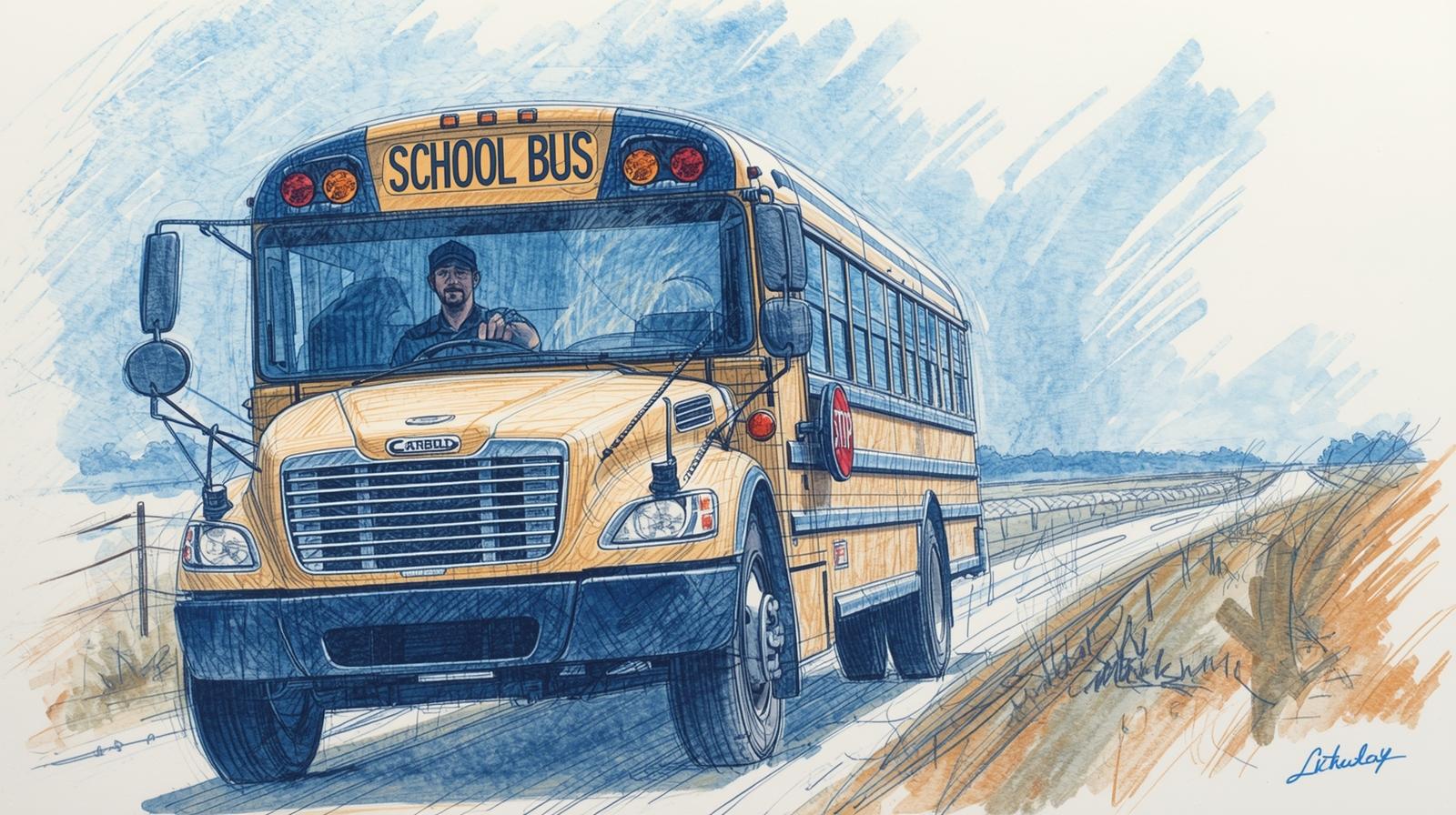Safety Protocols for Driving a School Bus in Canada
If you want to become a school bus driver in Canada, you must go through a rigorous training process and pass a road test to prove that you’re fit for the role. But most important of all, you must follow a strict safety protocol to be trusted with children’s lives.

Besides that, you’re required to pass a medical evaluation and a criminal check with vulnerable sector screening to be eligible for a bus driving license. In fact, the minimum requirements are so strict that if you have more than six demerit points on your driving record, you may be disqualified in most provinces.
If you’re training to become a school bus driver in Canada, this article will cover all the safety protocols you need to know. Let’s get started!
Pre-Trip Inspection
Before every trip, you must conduct a thorough pre-trip inspection as mandated by the National Safety Code and provincial regulations. This involves checking the brakes, lights, mirrors, tires, emergency exits, and safety equipment, such as fire extinguishers, reflective triangles, and first-aid kits. The inspection also includes checking the mechanisms for the crossing arm and stop sign, which are critical for the safe loading and unloading of children.
Once you’re done, you must log the inspections in a daily report for your supervisor or inspector to review. If your bus has a safety defect, it must be taken out of service until fully repaired.
But that’s not all; when you’re done with your shift, you must walk the entire length of the bus from back to front and check under every seat to ensure no child has fallen asleep or been left behind.
Loading and Unloading Process
The area within three meters of the bus is known as the “danger zone”. This is because most drivers might find it difficult to spot children close to the bus, especially when they’re crossing the road. Not to mention, most young children ignore the traffic when rushing to and from the bus. This means it’s your responsibility as a bus driver to ensure your students’ safety when loading and unloading at all times.
For starters, you must activate the amber alternating warning lights when you’re at least 200 meters from a stop sign. This signals to other motorists that the bus is preparing to stop. As you approach the stop, continuously check the mirrors and monitor traffic from all directions before coming to a smooth, complete stop.
Next, engage the parking brake, put the transmission in neutral, and activate the red alternating lights and the stop arm. At this point, the bus door should remain closed until you’ve confirmed all vehicles in both directions have stopped and it’s safe to open. Keep in mind that in Canada, all cars on a two-lane road must stop in both directions when a school bus activates its stop arm.
Children exiting the bus must be instructed to walk at least three meters ahead of the front bumper so you can have a clear line of sight before they cross. However, you must signal the children with a nod or hand gesture to cross the road when it’s safe to do so after scanning the road for any vehicles that may ignore the law.
After all students have crossed the road, you can perform a mirror scan to account for the students, then close the door and deactivate the warning system to complete the process. The same safety protocols can be repeated when onboarding students.
Defensive Driving
Since a bus is long, wide, and heavy, the laws of physics force it to have a longer stopping distance than a standard passenger vehicle. Taking that into account, you must maintain a following distance of at least 6 seconds under normal conditions. However, you can double the following distance and reduce the speed when travelling in adverse weather or poor road conditions.
Beyond that, you can learn how to operate the bus smoothly so as not to jostle the passengers every time you start, stop, and turn. Another safety protocol you should observe is to constantly scan the surrounding environment to anticipate potential hazards and adapt to traffic conditions.
Emergency Procedures
While rare, emergencies can happen, and you must be prepared to take command. This requires knowledge of the vehicle’s emergency exits, including the rear door, side windows, and roof hatches. In the event of an evacuation, you’re the designated leader who must provide clear, calm, and concise instructions to frightened children.
But if it’s a breakdown, your first course of action should be to pull over to the safest possible location, activate the four-way hazard lights, and communicate the situation to dispatch. Regardless of the emergency, your priority is your students’ well-being. Additionally, you’re expected to be well-versed in first aid and fire response emergency protocols.
Passenger Conduct and Supervision
If students misbehave on the bus, it may be difficult for you to operate it safely due to distractions. To avoid that, it’s essential to ensure students remain seated and face forward while the bus is in motion. Aisles must also be kept completely clear of bags, instruments, and feet.
If student behavior becomes a serious safety risk, the best procedure is to pull over to a safe location to address the situation before resuming the trip.
